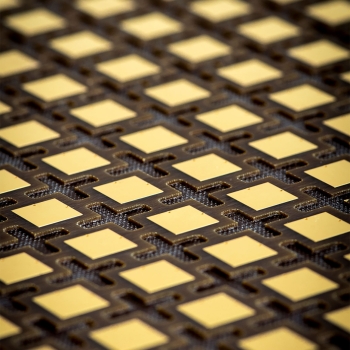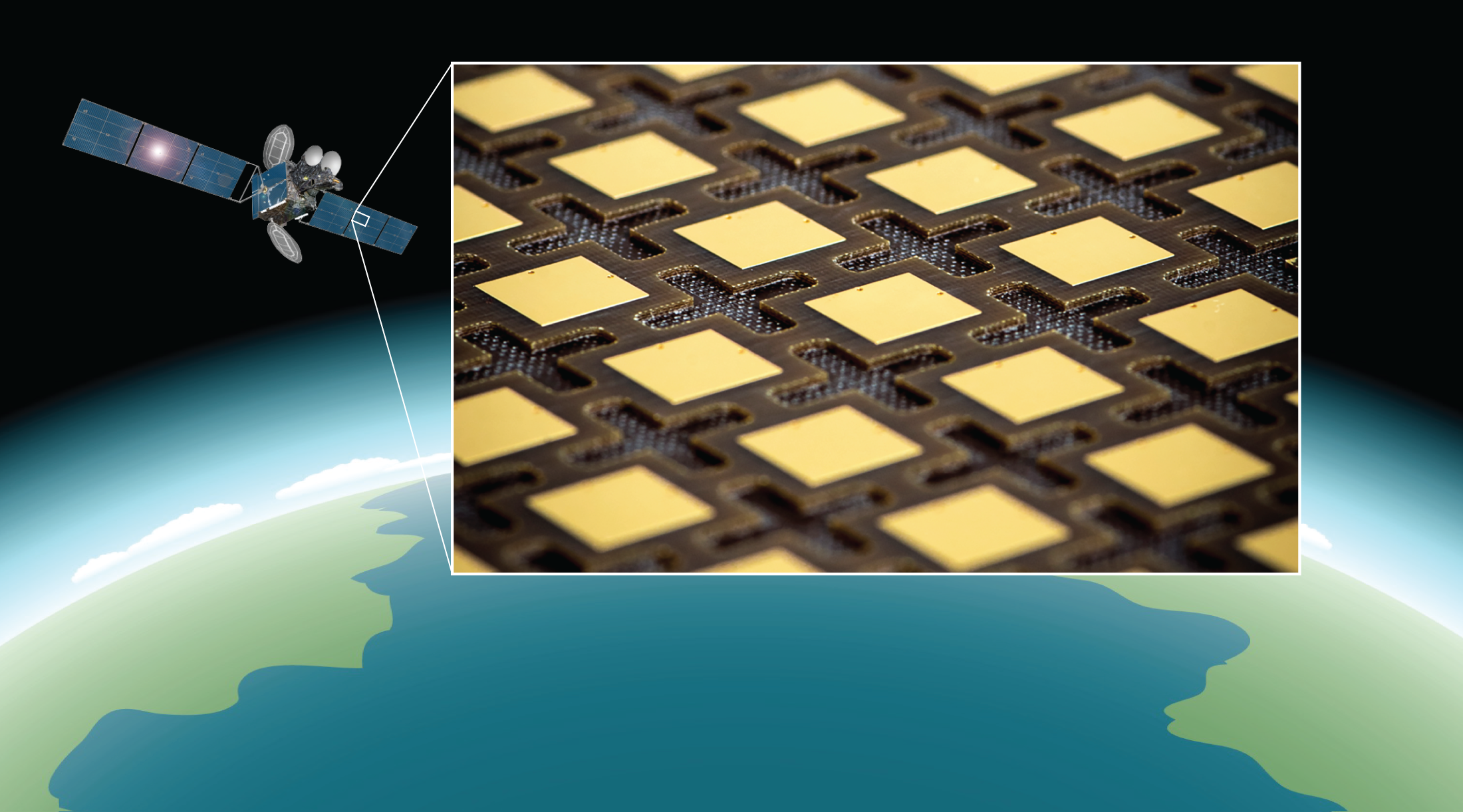Lightweight Deployable Antenna Array Panels

These innovative panels are designed to decrease the weight, and therefore the launch costs, of space-based radar systems. The panels employ novel techniques to reduce the volume and weight of active electronically steered antennas critical to the performance of systems used by communication satellites and environmental-sensing systems.
Significantly contributing to the multimillion-dollar cost of launching a space-based system are its weight and size. The lift-off power of a rocket required to deploy a large, heavy system correlates directly to the launch pricetag. This expense limits the number of space-based systems available for increasing demands in communications and environmental monitoring. One way to lower launch costs is to reduce the weight of the system by building lightweight components.
Lincoln Laboratory researchers developed a compact antenna array panel that is lightweight yet does not compromise the RF performance of a space-based radar system. The array panel uses highly directive, active electronically steered antennas (AESAs) that enable inertial-less beam steering in microseconds.

Concept
After the space-based system reaches station altitude, the lightweight AESA panels deploy to create the desired radiating aperture size. The feeding mechanism for the array radiators is a network of active silicon-germanium (SiGe)−based, plastic-packaged transmit and receive modules. The array utilizes Lincoln Laboratory's patented weight-reduction technique for stacked microstrip patch antenna arrays to greatly reduce the weight of a typical array without negatively impacting RF performance.
Benefits
- Decreases the weight of a typical array by 35% without significantly affecting RF performance
- Compact, deployable array reduces volume by more than a factor of 5 compared to typical antenna arrays
- Array is built of individual 1-inch thick panels that allow the deployment of large apertures
- Concept can be applied to various space-based or airborne communications and radar systems; it is scalable to systems operating within the 30 MHz to 30 GHz frequency range
Additional Resources
U.S. Patent 10,236,593
Read our news story “Novel lightweight antenna arrays
can reduce satellite launch costs.”
2019 R&D 100 Award winner